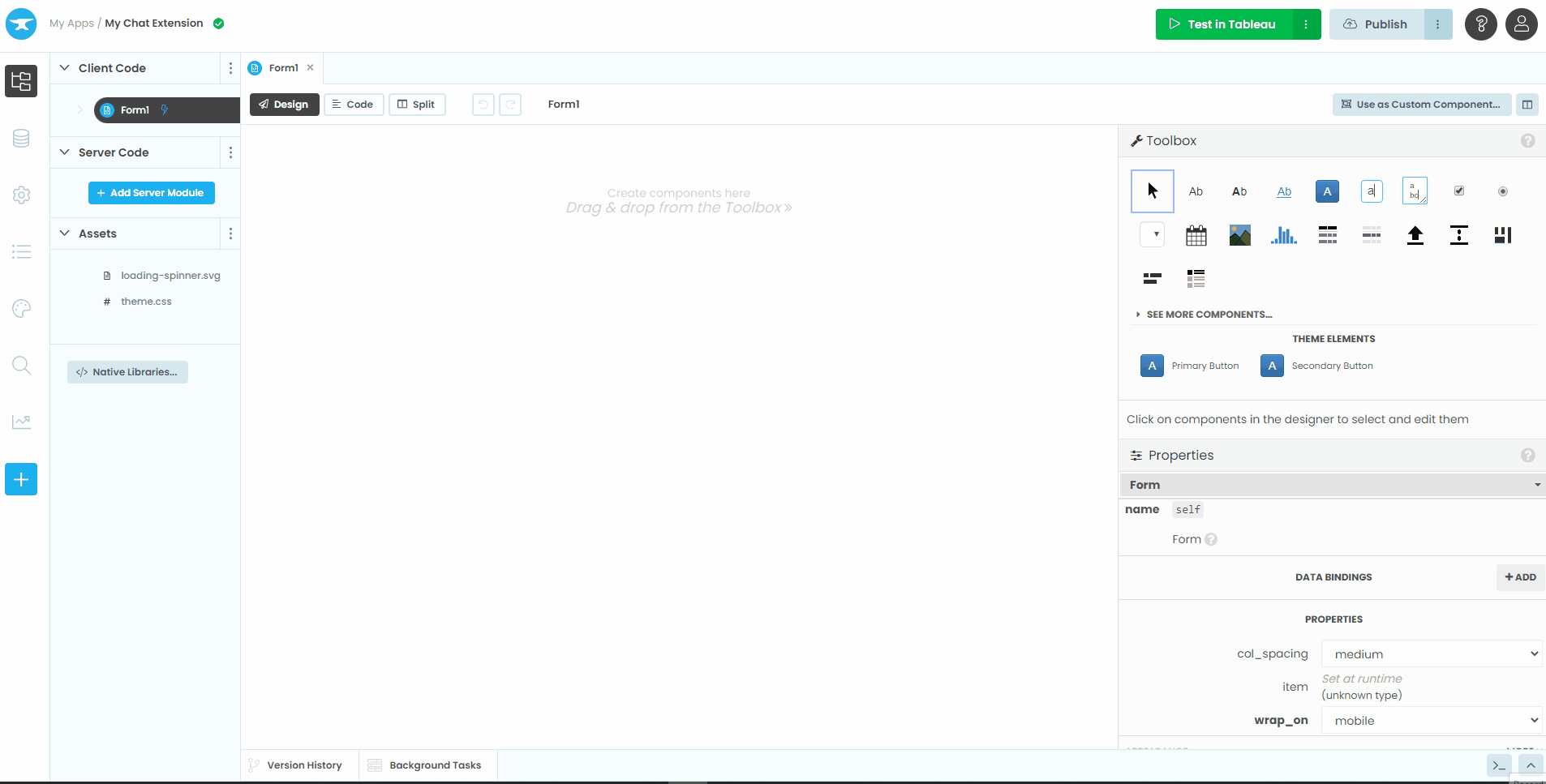Chapter 1: Setting up the environment
Before we dive in to building our extension we’ll need to do 3 things:
Create an Anvil app with the
trexjacketdependencyCreate a Tableau dashboard to use our extension inside of
Add our Anvil app to our Tableau dashboard using a
.trexfile
Step 1: Create your Anvil app
We’ve created an Anvil app for you to start from: click here to make your own copy.
Note that this app already has the trexjacket dependency added to it, but if you need to add the trexjacket dependency manually, select “Settings” > “Dependencies” and add the third party dependency using the following token: 4WJSBYGUAK63RAJO
Step 2: Create your Tableau Dashboard
We’ve also created a starter workbook that is available for download. Click here to download the Tableau dashboard your extension will extend off.
Step 3: Connect your Anvil app to your Tableau dashboard using a trex file
For our Tableau Dashboard to communicate with our Anvil app, we need to create a .trex file. The .trex file allows us to add our Anvil app into our dashboard as an extension.

To generate a .trex file:
Click the green “Test in Tableau” button in the top right of our screen
Click “Click here to download the manifest file for your extension” in Step 1. Steps 2 and forward are relevant if you plan to deploy your extension to Tableau Server, but for this tutorial we’ll just do step 1.
Once the
.trexfile has downloaded, open your Tableau Dashboard and locate the “Extension” button in the Objects pane.Click and drag this button on to the dashboard to add the extension.
A dialogue box named “Add an Extension” will open. Click “Access Local Extensions” and select the
.trexfile from the second step.Accept the dialogue by clicking the blue button.
And we’re done! In the next chapter we’ll start interacting with our dashboard with Anvil X